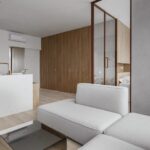Revolutionizing Interior Design 2030: Embrace The Future Of Home Décor
Interior Design 2030: A Glimpse into the Future of Living Spaces
As an avid lover of all things design-related, I have always been fascinated by the concept of interior design and how it shapes our living spaces. Recently, I had the opportunity to explore the world of interior design 2030, a futuristic vision that promises to revolutionize the way we perceive and interact with our homes. In this article, I will take you on a journey through the what, who, when, where, why, and how of interior design 2030, providing insights, tips, and tricks along the way.
What is Interior Design 2030?
Interior design 2030 is an innovative approach that envisions the future of living spaces. It combines cutting-edge technology, sustainability, and a deep understanding of human behavior to create spaces that are not only aesthetically pleasing but also functional and eco-friendly. This revolutionary design concept strives to enhance the overall quality of life by incorporating smart technologies, sustainable materials, and adaptable spaces that can evolve with our changing needs.
3 Picture Gallery: Revolutionizing Interior Design 2030: Embrace The Future Of Home Décor
Who is Driving the Interior Design 2030 Movement?
The interior design 2030 movement is being led by a diverse group of industry professionals, including architects, interior designers, engineers, and technologists. These visionaries are constantly pushing the boundaries of design, exploring new materials, techniques, and technologies to create innovative living spaces. They are driven by a shared goal of creating sustainable and inclusive environments that cater to the needs of individuals and communities alike.
When and Where Will Interior Design 2030 Become a Reality?

Image Source: richardskitchensandbaths.com
The timeline for the widespread adoption of interior design 2030 is projected to be around the year 2030. However, we are already witnessing glimpses of this futuristic design concept in various projects and prototypes around the world. From smart homes in Silicon Valley to eco-friendly apartments in Europe, interior design 2030 is slowly but surely making its mark on the global design scene.
Why Should We Embrace Interior Design 2030?
Interior design 2030 offers numerous benefits that make it worth embracing. Firstly, it promotes sustainability by incorporating eco-friendly materials and energy-efficient technologies, reducing our carbon footprint. Secondly, it enhances our well-being by creating spaces that are tailored to our specific needs, whether it’s optimizing natural light or incorporating elements that promote relaxation. Lastly, interior design 2030 embraces the concept of adaptable spaces, allowing us to modify our living environments as our needs change over time.
How Can I Incorporate Interior Design 2030 in My Living Space?
While fully embracing interior design 2030 might require extensive renovations or even building a new home, there are several ways to incorporate elements of this futuristic design concept into your existing living space. Start by integrating smart technologies such as voice-activated assistants or automated lighting systems. Consider using sustainable materials like bamboo flooring or recycled glass countertops. Lastly, make your space adaptable by incorporating modular furniture or multifunctional pieces that can be easily rearranged to suit your changing needs.
Frequently Asked Questions about Interior Design 2030
What are the key features of interior design 2030?

Image Source: infineon.com
Interior design 2030 is characterized by its focus on sustainability, adaptability, and technology integration. It aims to create spaces that are energy-efficient, eco-friendly, and capable of evolving with the changing needs of its inhabitants.
What types of materials are commonly used in interior design 2030?
In interior design 2030, sustainable materials are highly favored. These can include bamboo, cork, recycled glass, reclaimed wood, and other environmentally friendly options. The emphasis is on reducing the environmental impact and promoting a circular economy.
What are the size requirements for interior design 2030?
Size requirements for interior design 2030 can vary depending on the specific project or space. However, the focus is on optimizing the available space to maximize functionality and comfort.
What are the pros and cons of interior design 2030?

Image Source: richardskitchensandbaths.com
Pros: Improved sustainability, increased well-being, adaptable spaces, integration of smart technologies.
Cons: Potential higher costs, need for technological expertise, limited availability of sustainable materials.
Conclusion: A Glimpse into the Future
Interior design 2030 offers an exciting glimpse into the future of living spaces. With its focus on sustainability, adaptability, and technology integration, this design concept has the potential to revolutionize the way we live, work, and interact with our homes. While there are challenges to be overcome, the benefits far outweigh the drawbacks. As we approach the year 2030, I am excited to witness the evolution of interior design and the positive impact it will have on our lives. I highly recommend embracing this futuristic design concept and exploring how it can transform your living space.
This post topic: Interior Design

